

First stop, the A-Bomb Dome and Hiroshima Peace Park (Heiwakoen = Peace Park)!
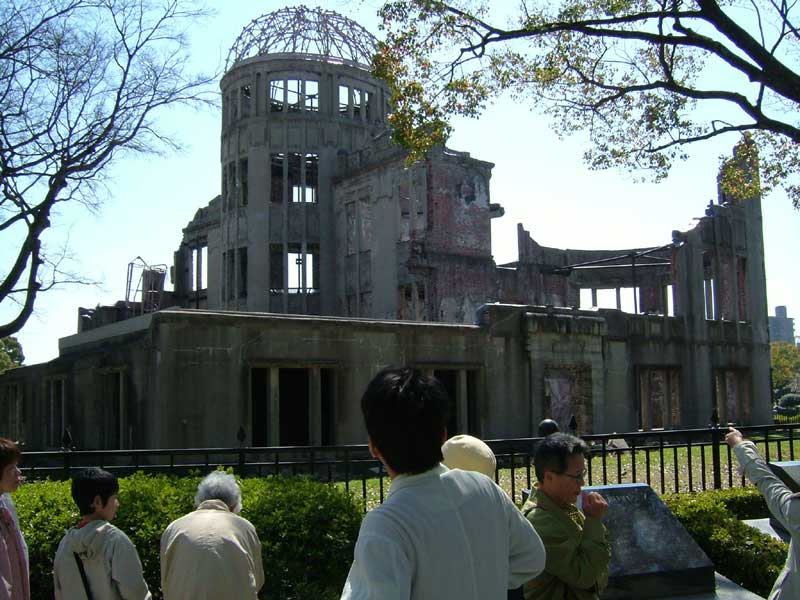
In the aftermath of the bomb, only one building near the hypocenter of the blast was left standing--the Prefecture Industrial Promotion Hall, which escaped total destruction because it was a ferro-concrete, reinforced, modern building. Later we found out that 85% of the buildings in Hiroshima proper were either completely destroyed or damaged beyond recovery. 40-60% of the people living in Hiroshima were killed, and thousands more were injured. The Industrial Promotion Hall was reinforced and left standing in order to pay memorial to the destructive power of the bomb.

Here is the text explaining the A-Bomb Dome.
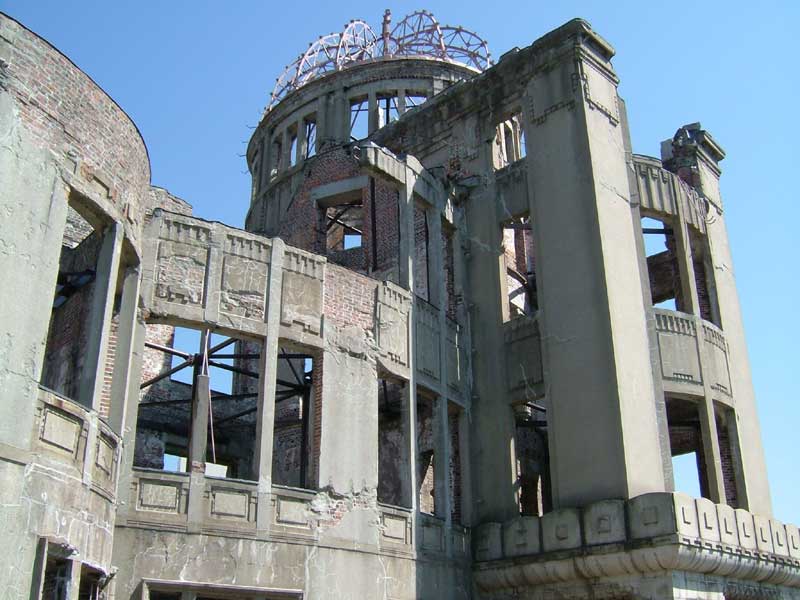
Another picture of the Industrial Promotion Hall. Notice that many of the walls are braced by steel laticework in order to maintain the structure.
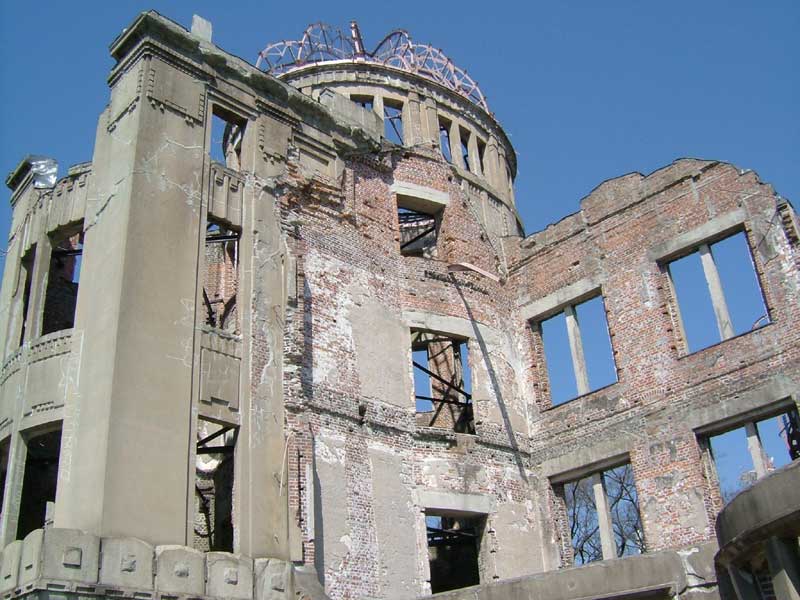
And another picture of the A-Bomb Dome from a different angle.
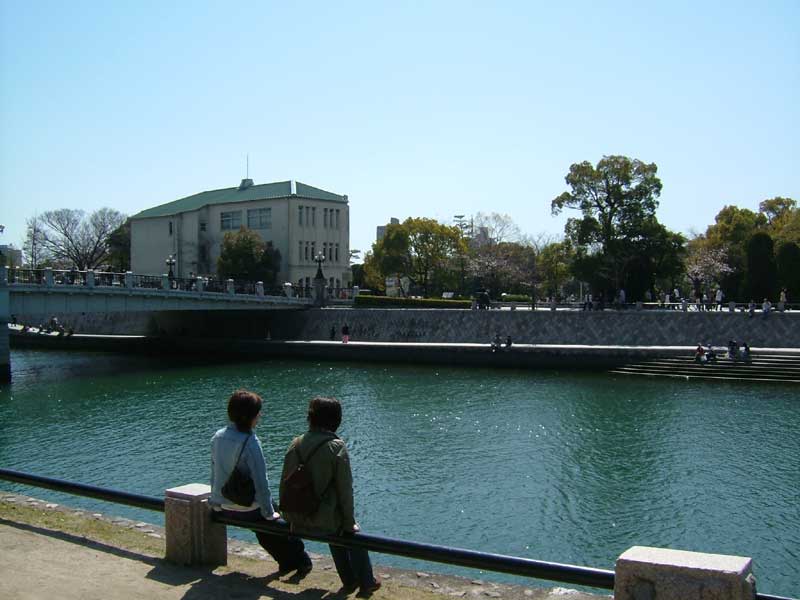
The A-Bomb Dome itself is across the river from the main Peace Park. To access the memorials and the museum, you have to cross the bridge into the main area of the park.
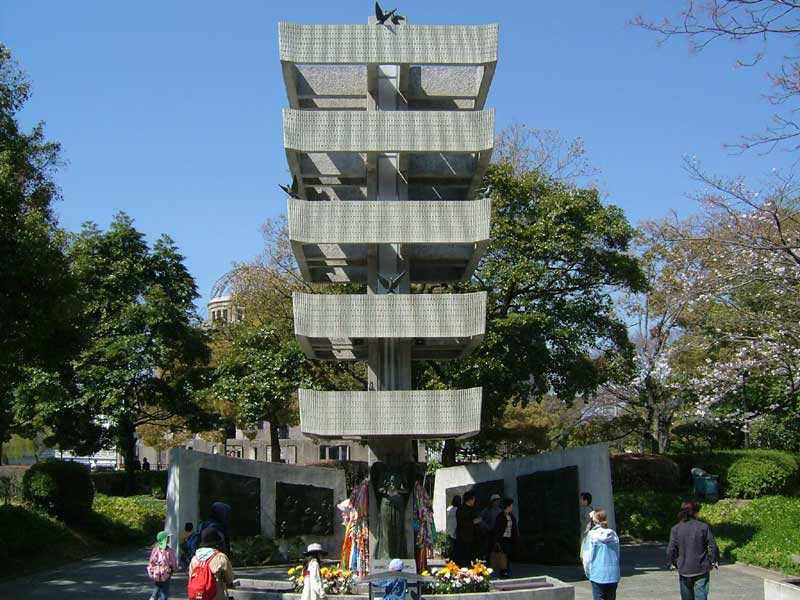
This is one several memorials that dots the grounds of the Peace Park. This particular memorial honors the tens of thousands of children who gave up their childhood years working for the war effort, only to be killed by the Bomb near the end. Hiroshima hadn't been bombed at all yet, and, in anticipation of a conventional or incindiary bombing raid, troops of teenagers were busy in many Japanese cities demolishing wooden houses in order to build protective fire-breaks. Many of these workers were out working on these projects when the Bomb was dropped.
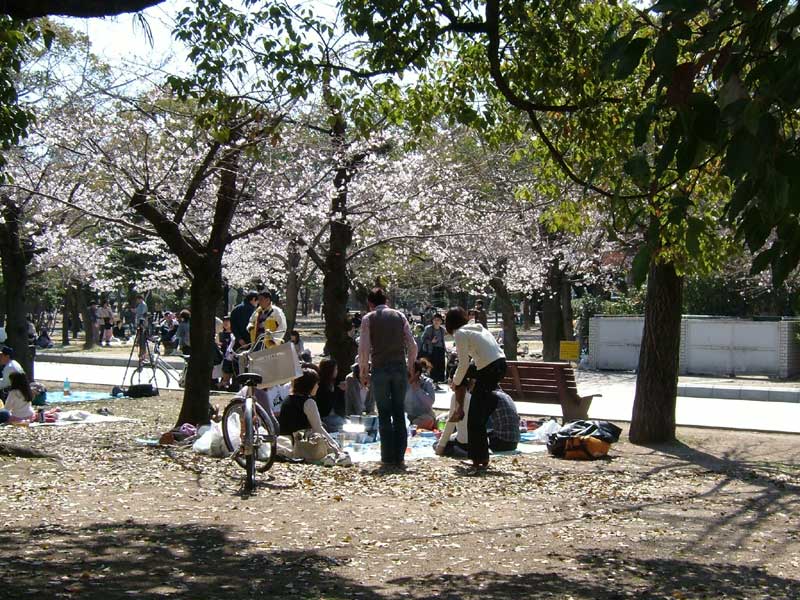
Despite the solemn purpose of the park, it's still a beautiful place filled with, you guessed it, sakura. Since Hiroshima is a bit further south than Kyouto, the blossoms were more plentiful, prompting the hanami (flower-looking) parties that you can see in this picture.
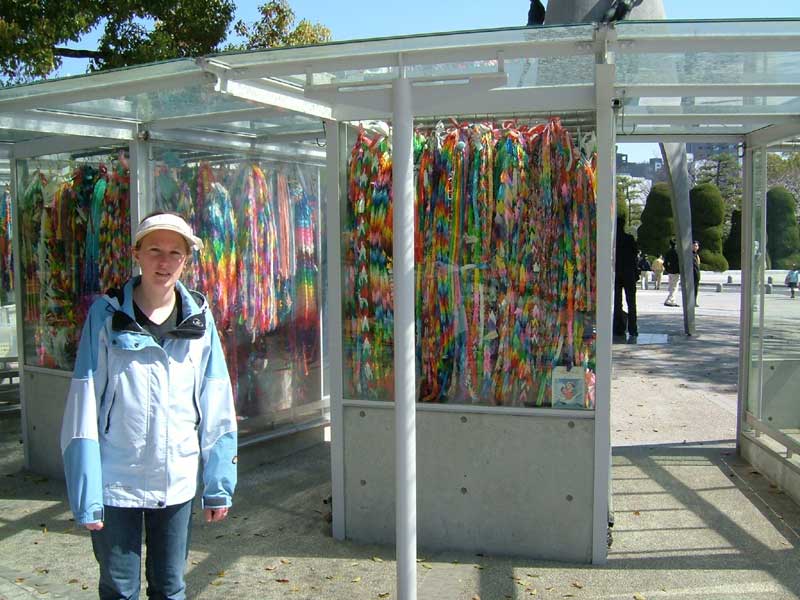
One of the victims of the A-Bomb, a young girl who was hospitalized with radiation-effect cancer, started making paper cranes. She believed that her illness would be cured if she were able to make 1000 cranes. She died while somewhere in the upper 900s. In memory of her, this monument was constructed. Inside the glass enclosures are thousands of paper cranes made by visitors to the site.
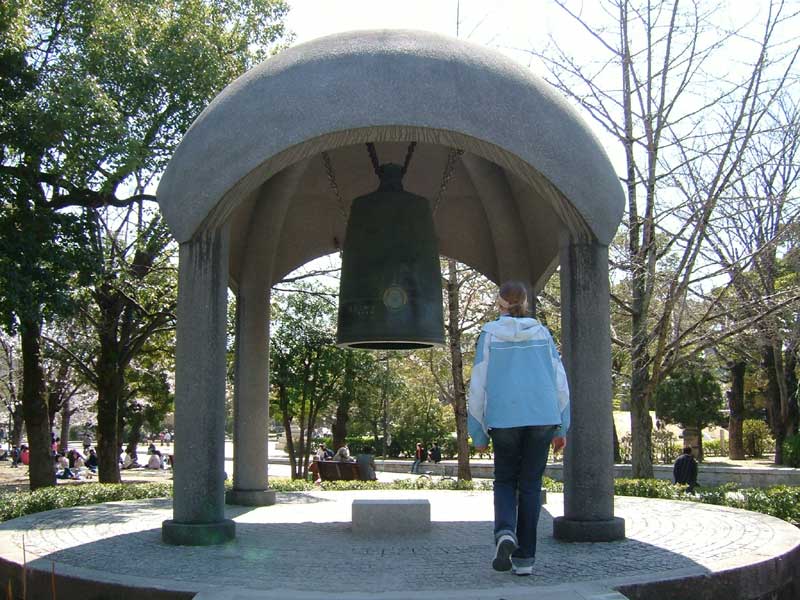
Here is the Hiroshima Peace Bell. You are suppose to ring it if you believe in peace. Both of us rang it.
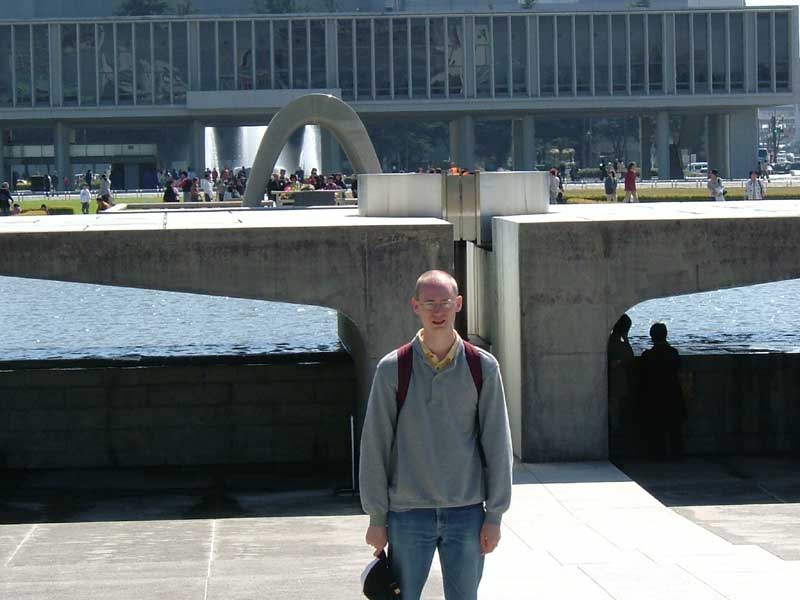
The flame that Peter is posing in front of is not an eternal flame, but one intended to last until all nuclear weapons are removed from the planet. Each time a nation conducts a nuclear test, the mayor of Hiroshima writes a letter to the executive of the nation requesting them to remember the horror of Hiroshima and destroy their weapons. In the museum in the background, the letters are all displayed on a wall. Depressingly, many of them are addressed to Presidents of the US.
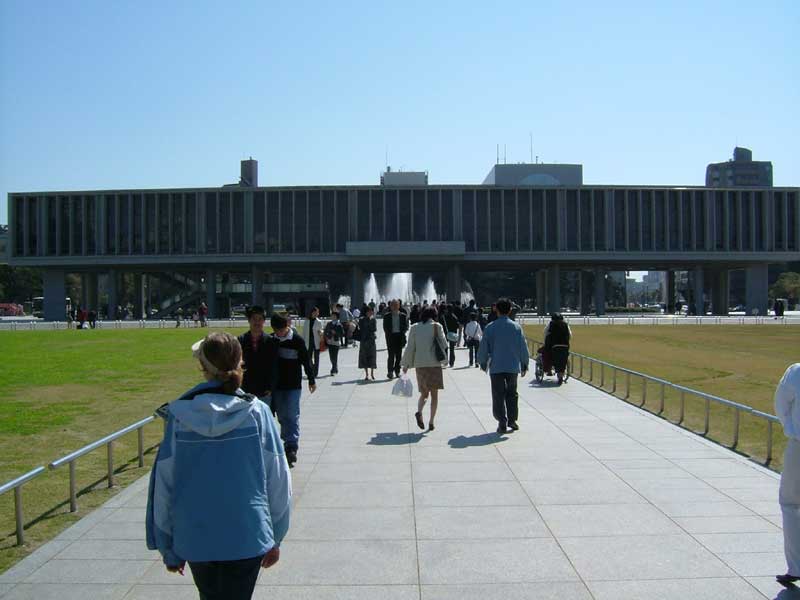
After seeing all the sites in the Peace Park, we headed for the museum. Flash photography was not permitted inside the museum, but photos wouldn't do it justice anyway. Needless to say, it was horribly depressing. We just sat on a bench outside for a while afterwards.